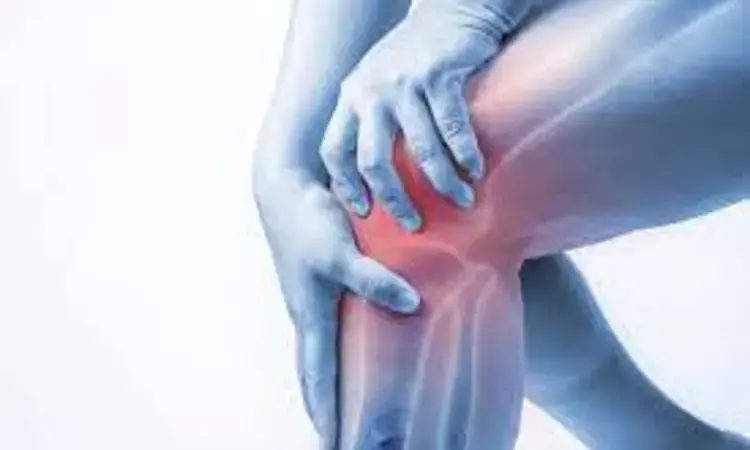- Home
- Medical news & Guidelines
- Anesthesiology
- Cardiology and CTVS
- Critical Care
- Dentistry
- Dermatology
- Diabetes and Endocrinology
- ENT
- Gastroenterology
- Medicine
- Nephrology
- Neurology
- Obstretics-Gynaecology
- Oncology
- Ophthalmology
- Orthopaedics
- Pediatrics-Neonatology
- Psychiatry
- Pulmonology
- Radiology
- Surgery
- Urology
- Laboratory Medicine
- Diet
- Nursing
- Paramedical
- Physiotherapy
- Health news
- Fact Check
- Bone Health Fact Check
- Brain Health Fact Check
- Cancer Related Fact Check
- Child Care Fact Check
- Dental and oral health fact check
- Diabetes and metabolic health fact check
- Diet and Nutrition Fact Check
- Eye and ENT Care Fact Check
- Fitness fact check
- Gut health fact check
- Heart health fact check
- Kidney health fact check
- Medical education fact check
- Men's health fact check
- Respiratory fact check
- Skin and hair care fact check
- Vaccine and Immunization fact check
- Women's health fact check
- AYUSH
- State News
- Andaman and Nicobar Islands
- Andhra Pradesh
- Arunachal Pradesh
- Assam
- Bihar
- Chandigarh
- Chattisgarh
- Dadra and Nagar Haveli
- Daman and Diu
- Delhi
- Goa
- Gujarat
- Haryana
- Himachal Pradesh
- Jammu & Kashmir
- Jharkhand
- Karnataka
- Kerala
- Ladakh
- Lakshadweep
- Madhya Pradesh
- Maharashtra
- Manipur
- Meghalaya
- Mizoram
- Nagaland
- Odisha
- Puducherry
- Punjab
- Rajasthan
- Sikkim
- Tamil Nadu
- Telangana
- Tripura
- Uttar Pradesh
- Uttrakhand
- West Bengal
- Medical Education
- Industry
Time Dependent Increase in Medial Meniscus Extrusion may require Meniscal Repair in Partial Medial Meniscus Posterior Root Tears

Koki Kawada et al conducted a study to compare medial meniscus extrusion (MME) in patients with partial medial meniscus posterior root tears (MMPRTs) through magnetic resonance imaging (MRI) conducted at two-time points and to determine whether patient characteristics or MME measurements differ in patients who respond to nonoperative treatment compared with those who require surgical treatment.
The study was conducted at Department of Orthopaedic Surgery, Okayama University Graduate School of Medicine, Dentistry and Pharmaceutical Sciences, Shikata-cho, Kita-ku, Okayama, Japan. The study has been published in ‘Indian Journal of Orthopaedics.’
Medial meniscus posterior root tears (MMPRTs) occur frequently in middle-aged adults and cause painful posteromedial popping with descending actions, such as stairs or downhill. Recently, meniscal repair has been widely performed for MMPRTs and is more effective than conservative therapy or meniscectomy in preventing cartilage damage and reducing additional surgery.
37 patients with partial MMPRTs underwent two MRI scans during nonoperative management or before pull-out repair. Among these, 17 patients received nonoperative management, and 20 underwent pull-out repair. Partial MMPRTs were diagnosed based on the MRI findings. MME measurements were performed on both MRI scans. Statistical and receiver operating curve (ROC) analyses were performed.
Key findings of the study were:
• The duration from the onset to the first MRI scan (23.2±16.1 days vs. 23.9±37.8 days, p=0.200) and the follow-up duration (22.6 ± 12.2 months vs. 25.1 ± 12.8 months, p = 0.583) were not significantly different between the two groups.
• The duration between the two MRI scans was significantly shorter in the pull-out repair group than in the nonoperative management group.
• The increase in MME (ΔMME) on MRI scans was significantly greater in the pull-out repair group than in the nonoperative management group.
• Linear regression analysis revealed a weak correlation between the MRI interval and ΔMME in the nonoperative management group and a moderate correlation in the pull-out repair group.
• In the ROC construction, the cut-off value for ΔMME that requires surgical intervention was 0.41 mm, with a sensitivity and specificity of 85.0% and 52.9%, respectively.
The authors concluded – “Patients with partial MMPRTs requiring surgical treatment had greater MME progression in a shorter time and a time-dependent increase in MME. Therefore, a ΔMME of ≥0.41 mm may be useful in deciding surgical intervention based on MRI retests.”
Level of evidence III.
Further reading:
Time Dependent Increase in Medial Meniscus Extrusion Predicts the Need for Meniscal Repair in Patients with Partial Medial Meniscus Posterior Root Tears: A Case–Control Study
Koki Kawada, Takayuki Furumatsu et al
Indian Journal of Orthopaedics (2023) 57:1633–1639
https://doi.org/10.1007/s43465-023-00987-3
MBBS, Dip. Ortho, DNB ortho, MNAMS
Dr Supreeth D R (MBBS, Dip. Ortho, DNB ortho, MNAMS) is a practicing orthopedician with interest in medical research and publishing articles. He completed MBBS from mysore medical college, dip ortho from Trivandrum medical college and sec. DNB from Manipal Hospital, Bengaluru. He has expirence of 7years in the field of orthopedics. He has presented scientific papers & posters in various state, national and international conferences. His interest in writing articles lead the way to join medical dialogues. He can be contacted at editorial@medicaldialogues.in.
Dr Kamal Kant Kohli-MBBS, DTCD- a chest specialist with more than 30 years of practice and a flair for writing clinical articles, Dr Kamal Kant Kohli joined Medical Dialogues as a Chief Editor of Medical News. Besides writing articles, as an editor, he proofreads and verifies all the medical content published on Medical Dialogues including those coming from journals, studies,medical conferences,guidelines etc. Email: drkohli@medicaldialogues.in. Contact no. 011-43720751


